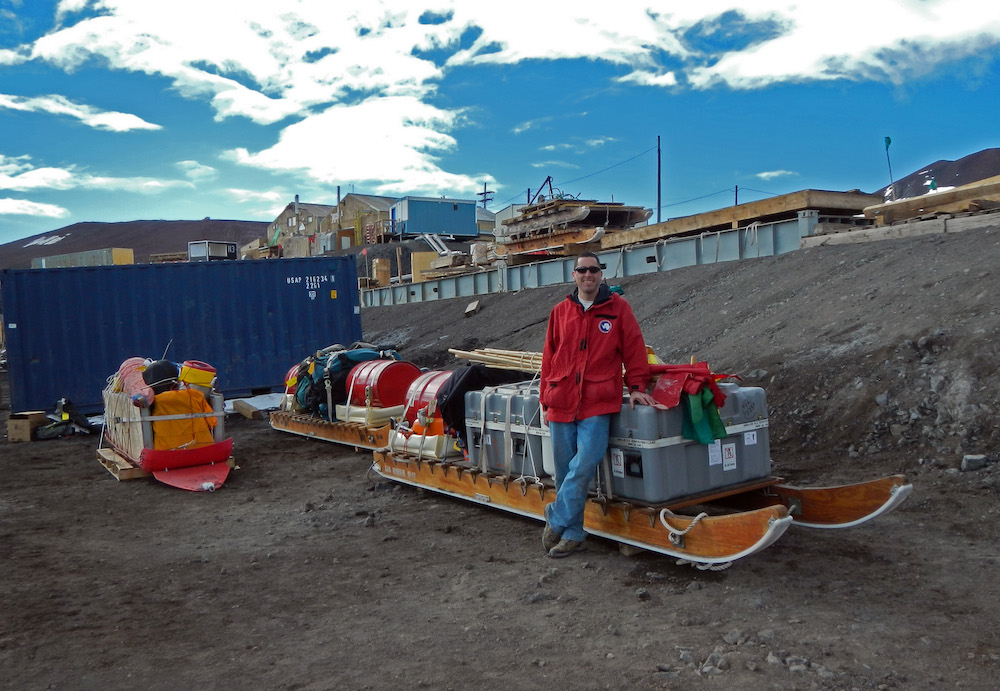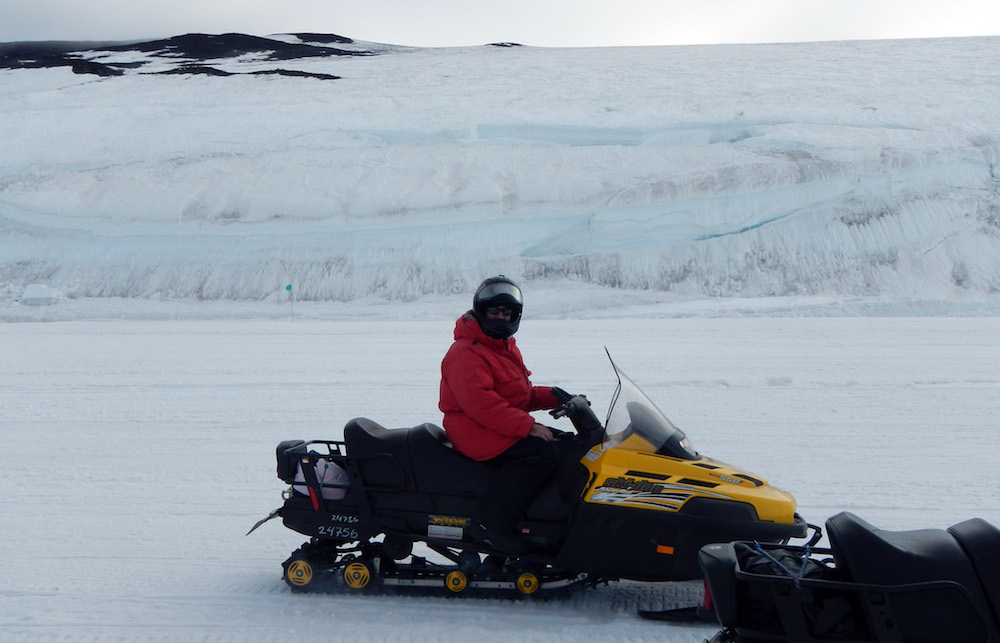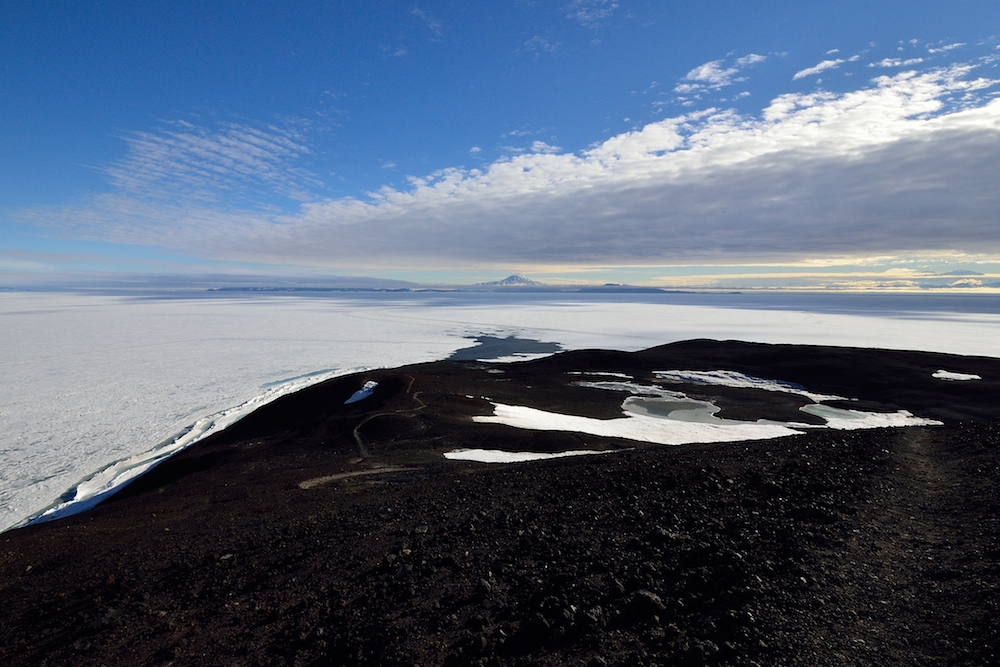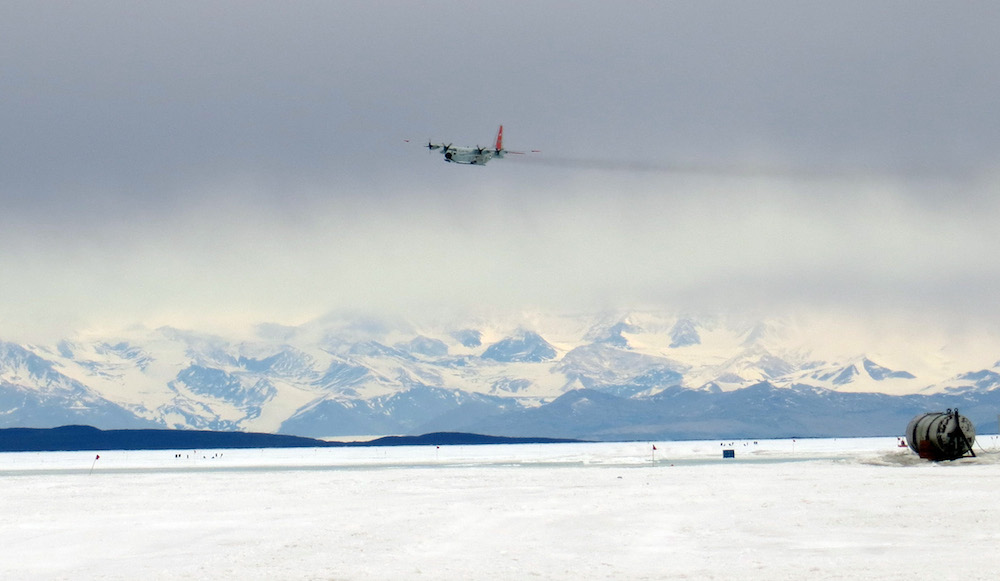13 January 2014
Melissa and I have spent the last few days getting ready for spending the next two weeks at our Tall Tower field camp. We’ve finished picking up all of our camp gear (tents, sleeping bags, stoves, fuel, generator, solar panel, food), testing and packing all of our science gear, and of course completing the last of our required training. We will be bringing almost 5000 pounds of gear with us including 200 pounds of food and several barrels of gas for our snowmobiles and generator.
The last two training classes we had to take were probably the most fun – certainly the most hands on – of the classes we’ve taken. On Friday we took a snowmobile class to refresh our memory of how to operate the snowmobiles, how to fix them if they break down while we are in the field, and a 5 mile test ride on the Ross Ice Shelf.
The test ride was a good shakedown for the 100+ miles we will be riding to get to our field camp. I realized on this ride that I need to cover all exposed skin when we are riding – the windchill from riding a snowmobile at 30 mph is pretty cold. I’ve grabbed a few more neck gaiters and face masks and those combined with the multiple layers of long underwear, fleece pants and jackets, and our giant red parka should keep me plenty warm.
On our ride back to McMurdo we saw a lone emperor penguin on the side of the snow road. The penguins are molting (replacing their feathers) this time of year and when they do this they tend to sit on the ice and wait until they have a new set of feathers before going back into the water. The same penguin was sitting in the same place on Tuesday when I came into McMurdo from the ice runway.
On Saturday we took the most important training class of all – crevasse rescue training. On the snowmobile trip to our field camp we will cross an area of the Ross Ice Shelf known as the shear zone. This zone is about 4 miles wide and separates ice that is moving a bit more than a half mile per year from ice that is moving much slower. The effect of this change in speed across the shear zone is that the ice in between gets pulled apart and cracks, known as crevasses, open in the ice in this area.
Obviously falling into a crevasse would be very bad. Fortunately, the route we are taking to get to our field camp is along the snow “road” used to haul gear to the South Pole every summer. The traverse that goes to the South Pole each year surveys the shear zone with ground penetrating radar to identify any crevasses along the route. This is necessary because sometimes the crevasses are covered with a thin layer of snow making them hard to see until you step onto the snow bridge and it collapses underneath you.
Counterintuitively, you are at the greatest risk of falling through a snow bridge while walking rather than while riding a heavily loaded snowmobile. The reason for this is that the weight per square inch exerted by your foot is much higher than the weight per square inch exerted by the snowmobile’s much larger track. The larger weight per square inch your foot exerts on the snow makes it more likely that you’ll break through a snow bridge when walking rather than when riding a snowmobile. Also, the longer length of a snowmobile means that the snowmobile can often span the gap at the top of the crevasse without falling in. As part of our safety precautions for crossing the shear zone we will not get off of our snowmobiles and if we need to get off we will use ice axes to probe the snow in front of us to ensure that it is solid and not a weak snow bridge that may break when we walk across it.
In addition to identifying the crevasses with ground penetrating radar the traverse team also fills in the larger crevasses making them safe to cross. The bottom line is that while this all sounds dangerous the risk of us falling into a crevasse while crossing the shear zone is very low.
Despite the low risk we still need to be prepared in case one of us does fall into a crevasse. This is where the crevasse rescue training class comes in. In this class a USAP mountaineer (Suz) taught Melissa, Ben (a graduate student at the University of Canterbury in Christchurch), and I how to use our snowmobiles as an anchor, rig a pulley system to the snowmobiles, and use this to extract someone from a crevasse.
Needless to say we all paid very close attention to everything Suz said. At the end of the class Suz went to the bottom of an artificially excavated crevasse and Melissa, Ben, and I had to extract her without falling in ourselves. I’m happy to report that we were able to do this without any trouble.
Other than keeping busy with packing and training I have managed to get out for evening hikes on the trails around McMurdo. It is always nice to end the day with a quite walk on the hills around town. The trails give good views across McMurdo Sound, to the mountains in the area (Mt. Erebus, Mt. Discovery, and the Transantarctic Mountains), and gets you away from the noise of all of the heavy equipment operating 24 hours per day in McMurdo. The sea ice in McMurdo Sound is starting to melt and there are lots of seals near the open water. I also saw one Adelie penguin on the sea ice during one of my hikes. By the time we get back from our field camp I expect a lot more ice to have melted and with more open water there should be more wildlife, including whales.
I’ll end with a photo that Dave took of my LC-130 coming in for a landing at the Pegasus ice runway last Tuesday. Dave and Lee were at Pegasus working on one of our weather stations when my plane landed, so he was able to take this picture.
Thanks for reading. I’ll post new updates once I’m back from our field camp at the end of January.
John









Hope the camping is great!